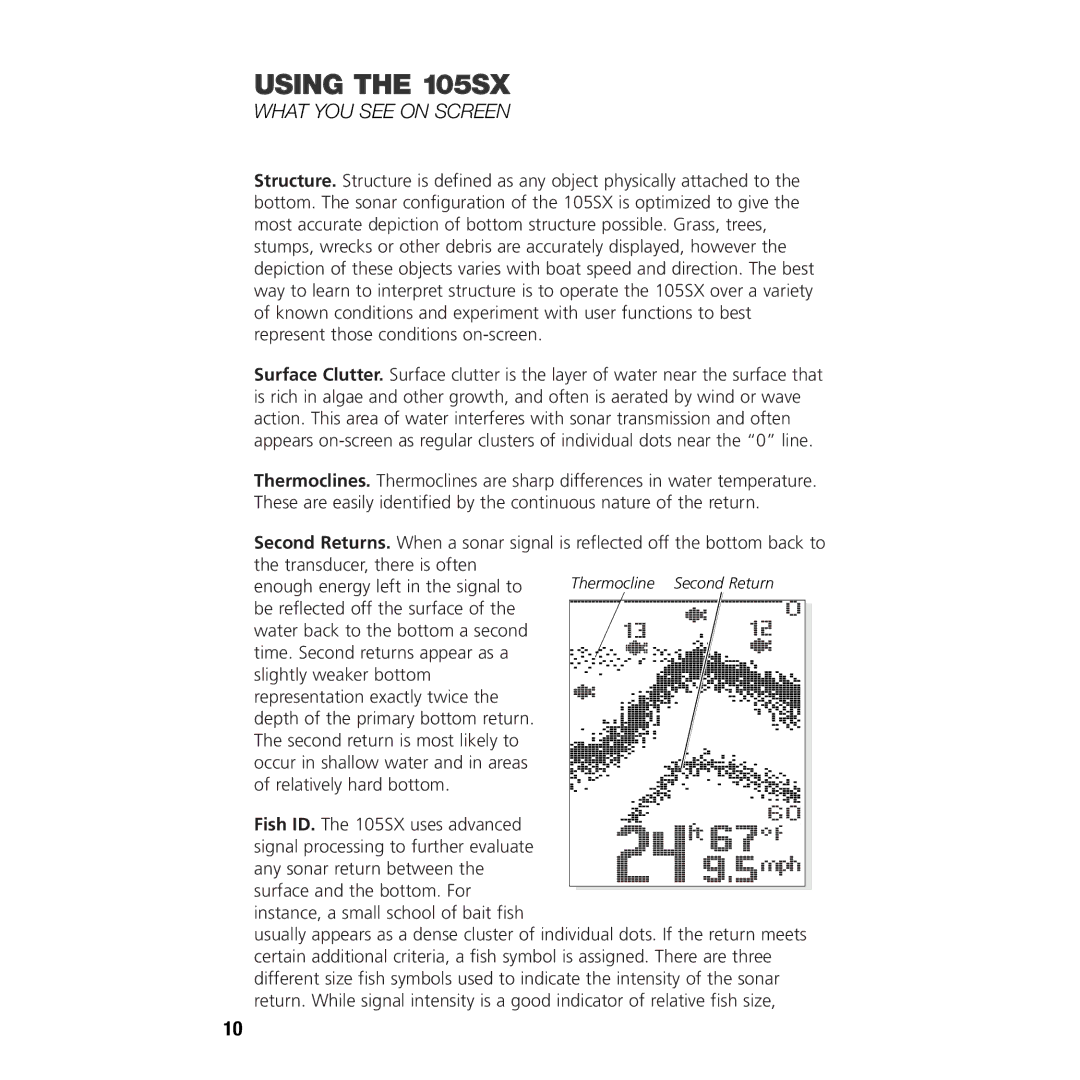
USING THE 105SX
WHAT YOU SEE ON SCREEN
Structure. Structure is defined as any object physically attached to the bottom. The sonar configuration of the 105SX is optimized to give the most accurate depiction of bottom structure possible. Grass, trees, stumps, wrecks or other debris are accurately displayed, however the depiction of these objects varies with boat speed and direction. The best way to learn to interpret structure is to operate the 105SX over a variety of known conditions and experiment with user functions to best represent those conditions
Surface Clutter. Surface clutter is the layer of water near the surface that is rich in algae and other growth, and often is aerated by wind or wave action. This area of water interferes with sonar transmission and often appears
Thermoclines. Thermoclines are sharp differences in water temperature. These are easily identified by the continuous nature of the return.
Second Returns. When a sonar signal is reflected off the bottom back to the transducer, there is often
enough energy left in the signal to
be reflected off the surface of the water back to the bottom a second time. Second returns appear as a slightly weaker bottom representation exactly twice the
depth of the primary bottom return. The second return is most likely to occur in shallow water and in areas of relatively hard bottom.
Fish ID. The 105SX uses advanced signal processing to further evaluate
any sonar return between the surface and the bottom. For
instance, a small school of bait fish
usually appears as a dense cluster of individual dots. If the return meets certain additional criteria, a fish symbol is assigned. There are three different size fish symbols used to indicate the intensity of the sonar return. While signal intensity is a good indicator of relative fish size,
10
